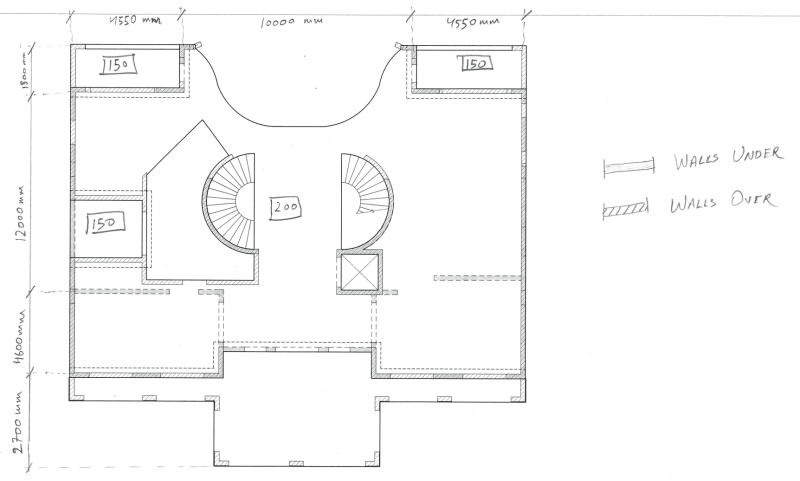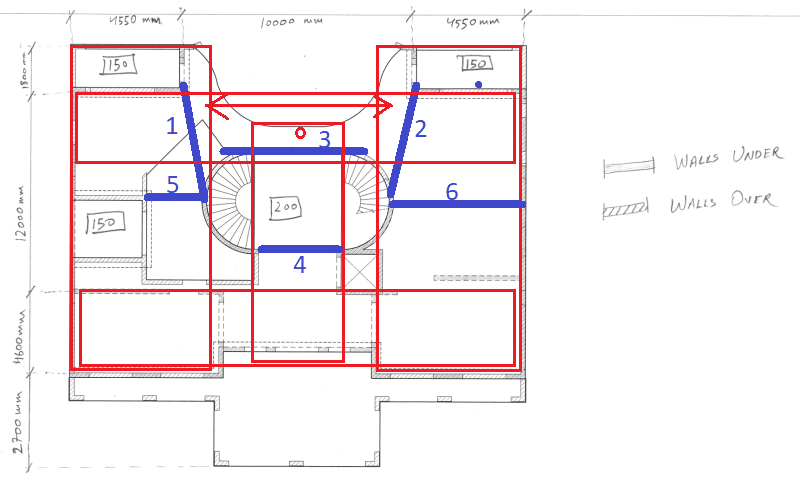HiggsBoston
Structural
Hi to anyone reading this,
I am at a complete loss as I attempt to design a suspended flat slab of irregular shape with openings - attached as below. I plan to do some manual calculations before I perform an FEA analysis but I don't know where to even begin since I am a recent graduate and have never laid my hands on anything like this before. It was my understanding that perhaps dividing it into design strips should help the case but it seems that many people on this forum - more experienced than myself - seem to have a disdain for the said method in such instances. I welcome any suggestions or pointers that may usher me out of my situation. I would also like to know of any books or references that I could peruse to equip myself with the required knowledge.
I should note that the client is opposed to the idea of having any beams anywhere or using post-tensioning.
Thanks heaps!

I am at a complete loss as I attempt to design a suspended flat slab of irregular shape with openings - attached as below. I plan to do some manual calculations before I perform an FEA analysis but I don't know where to even begin since I am a recent graduate and have never laid my hands on anything like this before. It was my understanding that perhaps dividing it into design strips should help the case but it seems that many people on this forum - more experienced than myself - seem to have a disdain for the said method in such instances. I welcome any suggestions or pointers that may usher me out of my situation. I would also like to know of any books or references that I could peruse to equip myself with the required knowledge.
I should note that the client is opposed to the idea of having any beams anywhere or using post-tensioning.
Thanks heaps!


